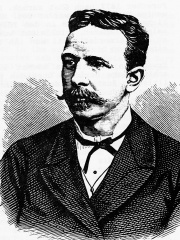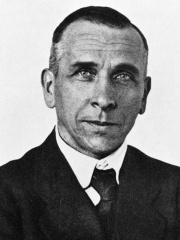
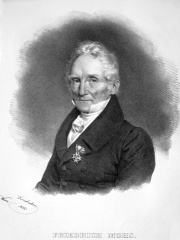
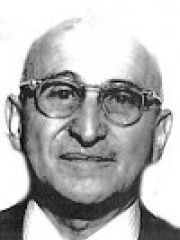
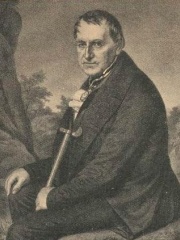
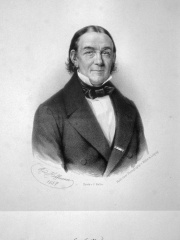
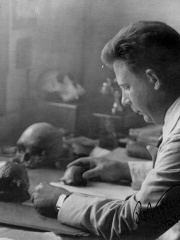
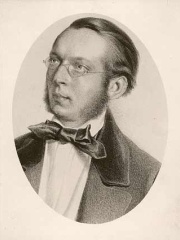
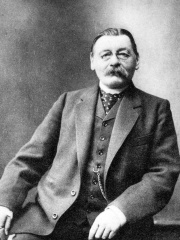
The Most Famous
GEOLOGISTS from Germany
This page contains a list of the greatest German Geologists. The pantheon dataset contains 90 Geologists, 8 of which were born in Germany. This makes Germany the birth place of the 3rd most number of Geologists behind United Kingdom, and United States.
Top 10
The following people are considered by Pantheon to be the top 10 most legendary German Geologists of all time. This list of famous German Geologists is sorted by HPI (Historical Popularity Index), a metric that aggregates information on a biography’s online popularity. Visit the rankings page to view the entire list of German Geologists.

1. Alfred Wegener (1880 - 1930)
With an HPI of 74.59, Alfred Wegener is the most famous German Geologist. His biography has been translated into 80 different languages on wikipedia.
Alfred Lothar Wegener (; German: [ˈʔalfʁeːt ˈveːɡənɐ]; 1 November 1880 – November 1930) was a German climatologist, geologist, geophysicist, meteorologist, and polar researcher. During his lifetime he was primarily known for his achievements in meteorology and as a pioneer of polar research, but today he is most remembered as the originator of continental drift hypothesis by suggesting in 1912 that the continents are slowly drifting around the Earth (German: Kontinentalverschiebung). His hypothesis was not accepted by mainstream geology until the 1950s, when numerous discoveries such as palaeomagnetism provided strong support for continental drift, and thereby a substantial basis for today's model of plate tectonics. Wegener was involved in several expeditions to Greenland to study polar air circulation before the existence of the jet stream was accepted. Expedition participants made many meteorological observations and were the first to overwinter on the inland Greenland ice sheet and the first to bore ice cores on a moving Arctic glacier.

2. Friedrich Mohs (1773 - 1839)
With an HPI of 62.71, Friedrich Mohs is the 2nd most famous German Geologist. His biography has been translated into 43 different languages.
Carl Friedrich Christian Mohs (German: [moːs]; 29 January 1773 – 29 September 1839) was a German chemist and mineralogist. He was the creator of the Mohs scale of mineral hardness. Mohs also introduced a classification of the crystal forms in crystal systems independently of Christian Samuel Weiss.

3. Beno Gutenberg (1889 - 1960)
With an HPI of 58.84, Beno Gutenberg is the 3rd most famous German Geologist. His biography has been translated into 29 different languages.
Beno Gutenberg (; June 4, 1889 – January 25, 1960) was a German-American seismologist who made several important contributions to the science. He was a colleague and mentor of Charles Francis Richter at the California Institute of Technology and Richter's collaborator in developing the Richter magnitude scale for measuring an earthquake's magnitude.

4. Christian Leopold von Buch (1774 - 1853)
With an HPI of 58.49, Christian Leopold von Buch is the 4th most famous German Geologist. His biography has been translated into 31 different languages.
Christian Leopold von Buch (26 April 1774 – 4 March 1853), usually cited as Leopold von Buch, was a German geologist and paleontologist born in Stolpe an der Oder (now a part of Angermünde, Brandenburg) and is remembered as one of the most important contributors to geology in the first half of the nineteenth century. His scientific interest was devoted to a broad spectrum of geological topics: volcanism, petrology, fossils, stratigraphy and mountain formation. His most remembered accomplishment is the scientific definition of the Jurassic system.
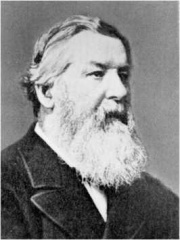
5. Julius von Haast (1822 - 1887)
With an HPI of 53.52, Julius von Haast is the 5th most famous German Geologist. His biography has been translated into 19 different languages.
Sir Johann Franz Julius von Haast (1 May 1822 – 16 August 1887) was a German-born New Zealand explorer, geologist, and founder of the Canterbury Museum in Christchurch.

6. Georg Amadeus Carl Friedrich Naumann (1797 - 1873)
With an HPI of 50.46, Georg Amadeus Carl Friedrich Naumann is the 6th most famous German Geologist. His biography has been translated into 18 different languages.
Georg Amadeus Carl Friedrich Naumann (30 May 1797 – 26 November 1873), also known as Karl Friedrich Naumann, was a German mineralogist and geologist. The crater Naumann on the Moon is named after him.

7. Gustav Heinrich Ralph von Koenigswald (1902 - 1982)
With an HPI of 49.40, Gustav Heinrich Ralph von Koenigswald is the 7th most famous German Geologist. His biography has been translated into 15 different languages.
Gustav Heinrich Ralph (often cited as G. H. R.) von Koenigswald (13 November 1902 – 10 July 1982) was a German-Dutch paleontologist and geologist who conducted research on hominins, including Homo erectus. His discoveries and studies of hominid fossils in Java and his studies of other important fossils of south-eastern Asia firmly established his reputation as one of the leading figures of 20th-century paleo-anthropology.

8. Ferdinand von Hochstetter (1829 - 1884)
With an HPI of 48.53, Ferdinand von Hochstetter is the 8th most famous German Geologist. His biography has been translated into 15 different languages.
Christian Gottlieb Ferdinand Ritter von Hochstetter (30 April 1829 – 18 July 1884) was a German-Austrian geologist.

9. Ferdinand Zirkel (1838 - 1912)
With an HPI of 48.31, Ferdinand Zirkel is the 9th most famous German Geologist. His biography has been translated into 17 different languages.
Prof Ferdinand Zirkel FRS(For) HFRSE (20 May 1838 – 11 June 1912) was a German geologist and petrographer.
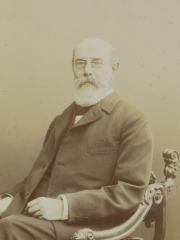
10. Harry Rosenbusch (1836 - 1914)
With an HPI of 48.15, Harry Rosenbusch is the 10th most famous German Geologist. His biography has been translated into 15 different languages.
(Karl) Heinrich/Harry (Ferdinand) Rosenbusch (24 June 1836 – 20 January 1914) was a German petrographer. Harry Rosenbusch was born in Einbeck. He taught at Heidelberg University (1877–1908), where he founded the Mineralogisches-geologisches Institut. He died, aged 77, in Heidelberg. He received the 1903 Wollaston Medal from the Geological Society of London.
People
Pantheon has 12 people classified as German geologists born between 1773 and 1902. Of these 12, none of them are still alive today. The most famous deceased German geologists include Alfred Wegener, Friedrich Mohs, and Beno Gutenberg. As of April 2024, 4 new German geologists have been added to Pantheon including Gustav Heinrich Ralph von Koenigswald, Ferdinand von Hochstetter, and Harry Rosenbusch.
Deceased German Geologists
Go to all RankingsAlfred Wegener
1880 - 1930
HPI: 74.59
Friedrich Mohs
1773 - 1839
HPI: 62.71
Beno Gutenberg
1889 - 1960
HPI: 58.84
Christian Leopold von Buch
1774 - 1853
HPI: 58.49
Julius von Haast
1822 - 1887
HPI: 53.52
Georg Amadeus Carl Friedrich Naumann
1797 - 1873
HPI: 50.46
Gustav Heinrich Ralph von Koenigswald
1902 - 1982
HPI: 49.40
Ferdinand von Hochstetter
1829 - 1884
HPI: 48.53
Ferdinand Zirkel
1838 - 1912
HPI: 48.31
Harry Rosenbusch
1836 - 1914
HPI: 48.15
Oskar Lenz
1848 - 1925
HPI: 48.06
Rudolf Geiger
1894 - 1981
HPI: 43.92
Newly Added German Geologists (2024)
Go to all RankingsGustav Heinrich Ralph von Koenigswald
1902 - 1982
HPI: 49.40
Ferdinand von Hochstetter
1829 - 1884
HPI: 48.53
Harry Rosenbusch
1836 - 1914
HPI: 48.15
Rudolf Geiger
1894 - 1981
HPI: 43.92
Overlapping Lives
Which Geologists were alive at the same time? This visualization shows the lifespans of the 11 most globally memorable Geologists since 1700.

